Mastering Meal Prep For Bariatric Patients
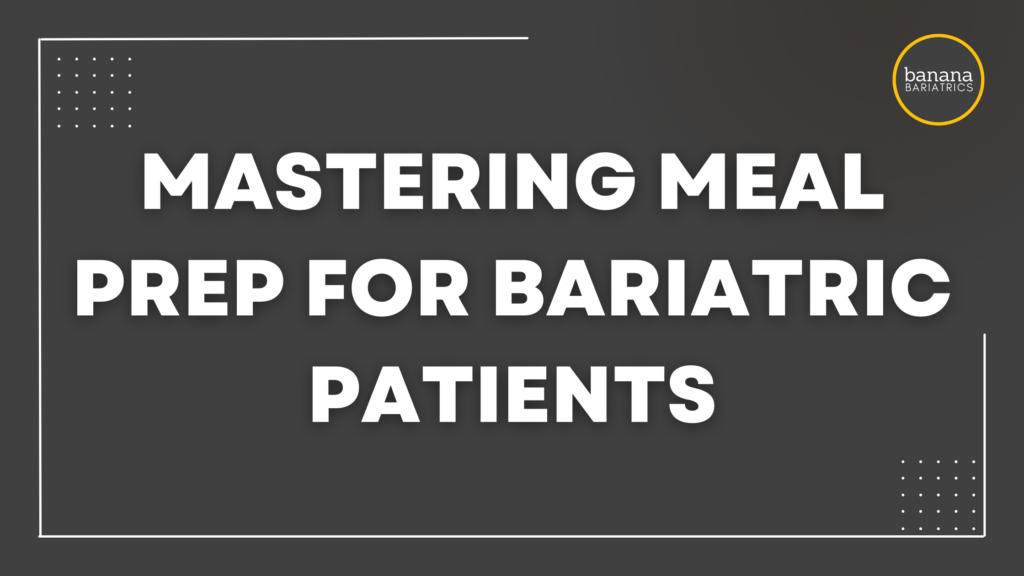
In today’s fast-paced world, finding the time to maintain a healthy diet can be challenging. Meal prepping allows you to save time preparing food, reduce stress, and help you stay on track with your health goals as a bariatric patient. In this week’s blog post, we’ll help you create delicious, healthy meals that support your bariatric lifestyle and health goals with as little stress and time commitment as possible.
Meal Prep Basics & Benefits
Meal prep involves planning, preparing, and storing meals or meal components ahead of time. It’s an efficient strategy that can help you adhere to their dietary needs without the daily hassle of cooking from scratch.
The beauty of meal prepping is that it you can save a lot of time cooking throughout the week with just a few hours of meal planning. In the long run, it will save you money since you won’t be driving through fast food restaurants because you don’t have an easy to grab breakfast, lunch, and/or dinner.
When meal prepping, you’re in control of creating portion sizes. By pre-portioning your meals, you can better control your caloric intake and reduce food waste. You can also prepare your containers with the right ratio of protein (50%), carbohydrates (ideally from non-starchy vegetables), and a little bit of fat and starches in appropriate bariatric proportions.
Lastly, whenever a plan is in place for the week, it’s easier to feel more relieved and less stressed knowing what you’ll be putting on the table far in advance.
Meal Prep Strategies At A Glance
When it comes to meal prepping, here are 5 important points to review and consider before starting:
- Start with a Plan: Begin by deciding what meals you’ll prepare and ensuring you have all the necessary ingredients. Choose recipes with similar ingredients to maximize your efficiency.
- Invest in Quality Containers: Good quality, airtight containers are crucial for keeping your food fresh throughout the week. See additional details below for choosing meal prep containers.
- Batch Cooking: Cooking large quantities of a particular recipe at once saves time and energy. If you’re cooking for a large family or for extra visitors, simply double the quantity of ingredients.
- Ingredient Prep: Washing, chopping, and marinating ingredients ahead of time can streamline the cooking process and save you a lot of time.
- Utilize Your Appliances: Slow cookers, instant pots, and air fryers can make meal prep simpler and more efficient. There’s nothing more gratifying that having one pot to dump everything into, closing the lid, hitting a button, and coming back to a freshly prepared meal created all on its own!
Choosing the right food storage container is crucial for meal prepping, as it can affect the freshness, flavor, and safety of your food. Here are some examples of different materials used for containers:
- Glass: Ideal for storing both hot and cold items, glass containers are durable, stain-resistant, and don’t harbor odors. They are microwave, freezer, and dishwasher safe, making them a versatile option. However, they can be heavy and more prone to breaking.
- Plastic: Lightweight and often cheaper than glass, high-quality plastic containers are great for transporting meals. Look for BPA-free plastic to avoid chemicals leaching into your food. Some plastics are microwave and dishwasher safe, but they may stain or retain odors over time.
- Stainless Steel: Excellent for cold dishes, stainless steel containers are durable and won’t break. However, they cannot be used in the microwave, and their opaque nature means you can’t see the contents without opening the lid.
An airtight seal is essential to keep food fresh longer and prevent leaks. Containers with locking lids or silicone seals are often the best at keeping air out and flavors in. In addition, choose containers that fit your portion sizes and the type of food you’re storing. For example, shallow, wide containers are great for salads and layered dishes, while taller containers may be better for soups or smoothies. Having a variety of sizes can also help you maximize fridge and freezer space.
If you plan to freeze meals or reheat them in the microwave, ensure your containers are designed for these purposes. Glass and certain plastics can handle extreme temperatures, but always check the manufacturer’s guidelines. Also, look for containers that are easy to clean, either by hand or in the dishwasher. Containers with fewer nooks and crannies will be easier to wash and keep free of bacteria.
To save space in your cabinets, fridge, or freezer, opt for containers that stack neatly on top of each other. This feature makes it easier to organize your meals and keep your kitchen tidy. Lastly, if you’re often on the go, lightweight plastic containers might be more practical than glass. For those who prioritize sustainability, glass or stainless steel might be preferable due to their longevity and recyclability.
Step-by-Step Meal Prep Guide
Planning Your Meals
- Choose recipes based on your dietary needs and preferences.
- Create a shopping list to ensure you have all necessary ingredients.
When starting to meal prep, it’s important to think through a plan that consists of healthy ingredients and recipes. The initial step in this process is to select recipes that not only align with your dietary needs and preferences but also taste great! Don’t be afraid to adjust or swap ingredients in the recipe to make it healthier for you. Here are some pointers on how to choose recipes:
- Start Simple: Begin with recipes that are within your cooking skill level and don’t require extensive preparation time. Look for recipes that don’t require extensive time prepping and cooking.
- Diverse Nutrition: Aim for a balance of proteins, vegetables, and complex carbohydrates/healthy fats in your meals to ensure a varied diet for your bariatric lifestyle.
- Favorites and New Tries: Have a list of easy “go-to” meals that you know from heart, and then mix in one or two new recipes to keep things interesting without feeling overwhelming.
Before you head out for the grocery store, ensure you have a list with you of all the necessary ingredients. Having a list can help you avoid impulse buys. And remember- never go to the grocery store hungry! Here are some suggestions when it comes to building a shopping list for the grocery store:
- Organize by Category: Write your list based on store sections (e.g., produce, dairy) to streamline your shopping trip.
- Inventory Check: Before heading to the store, check what ingredients you already have to avoid unnecessary purchases.
Preparation
- Dedicate a few hours one day a week to prepare your meals.
- Cook meals or meal components in batches.
Once your pantry and refrigerator is stocked from the grocery store, it’s time to aside a few dedicated hours, typically on a weekend, to dive into the cooking process so you won’t feel rushed. A few hours over the weekend will save you significant time all week long. Whether it’s roasting vegetables, cooking grains, or preparing protein sources, batch cooking will make it so much easier to throw dinner together in a few minutes on a busy weeknight.
Assessing your schedule for the week will make it easier to prepare your meals:
- Identify Busy Days: Look at your weekly schedule to pinpoint which days you’ll have more or less time for cooking. Plan simpler meals or leftovers for your busiest days.
- Prep Day: Choose a day to do the bulk of your meal preparation—often, the weekend works well for this.
- Task Splitting: Break down your prep into manageable tasks, such as chopping vegetables, marinating proteins, or cooking grains.
- Cooking Frequency: Decide how often you want to cook. Some people prefer cooking every day, while others might cook a few times a week in larger batches.
Storage
- Cool cooked food before storing.
- Use portion-controlled containers to store meals.
Once the cooking is complete, let your warm food completely cool before storing it away. This is essential to prevent bacterial growth and to maintain food safety. Investing in portion-controlled containers is not only practical for storing meals but also helps with managing portion sizes. These containers will be extra helpful during the week when you can open the refrigerator door, grab a container to go, and keep your morning moving when things get hectic and time is tight!
Enjoying Your Meals
- Reheat meals as needed, enjoying the convenience and nutrition of your prepped meals.
There’s nothing better than opening of a fridge full of ready-to-eat meals! Whether you’re reheating a comforting stew for dinner or grabbing a pre-portioned salad for lunch, the satisfaction of enjoying home-cooked, nutritious meals is wonderful. You’ll always eat healthier at home than out at a restaurant. Enjoy it!
Reviewing Your Meal Prep Week
Once you’ve finished your first week at meal planning, it’s important to take some time to reflect on how the experience went. Here are some ideas to help you review your meal prep process:
- Weekly Review: At the end of the week, reflect on what worked and what didn’t. Did you find the cooking manageable? Were there recipes that you particularly enjoyed or found too challenging?
- Adjust for Next Week: Use your reflections to adjust your meal plan for the next week. This could mean choosing simpler recipes, planning for more or fewer leftovers, or adjusting the amount of prep work.
- Stick to the Schedule: Try your best to follow the meal plan you’ve created, making adjustments as needed based on your week.
- Flexibility: Be open to swapping meals between days if your schedule changes or you have leftovers.
Conclusion
Embracing meal prepping as part of your bariatric lifestyle is a powerful step towards achieving your health and wellness goals. Remember, the key to effective meal prepping is consistency, flexibility, and a bit of creativity. By investing a few hours each week into planning and preparing your meals, you’re not only saving time and reducing stress but also taking control of your nutritional intake in a way that supports your bariatric health goals. As you continue to experiment with new recipes, ingredients, and techniques, you’ll find that meal prepping becomes an enjoyable and indispensable part of your routine. Here’s to making healthy eating easier and more accessible, one meal at a time!
Need Additional Help With Meal Prepping?
Download our FREE Meal Planner Template to help you stay consistent with meal prepping each week!
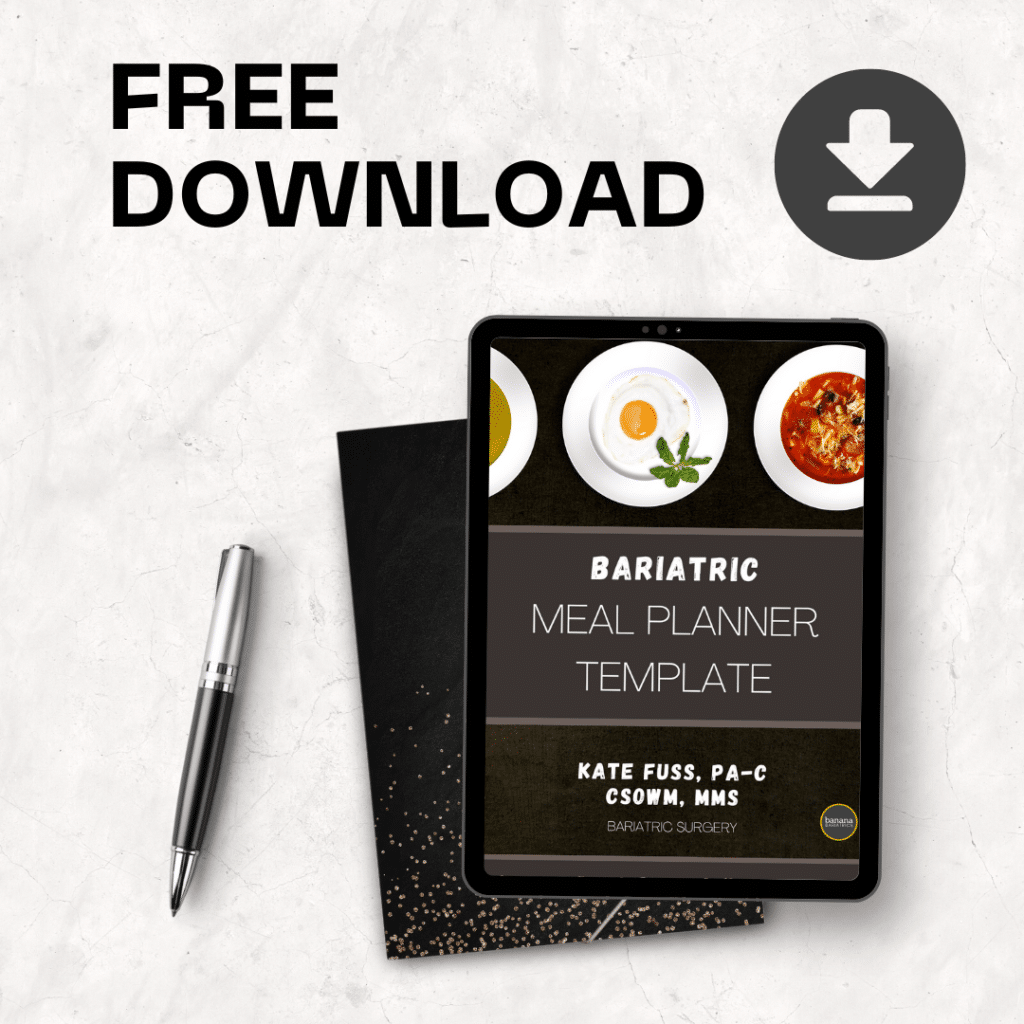
Our FREE Meal Planner Template will help you:
- Generate fresh recipe ideas
- Ensure bariatric-friendly snack options are readily available
- Choose healthier fast food and take-out alternatives
- Steer clear of inflammatory foods hindering weight loss
- Gain clarity on macros post-surgery
- Create an effortless meal prep template for the week
- Overcome barriers to successful meal prep
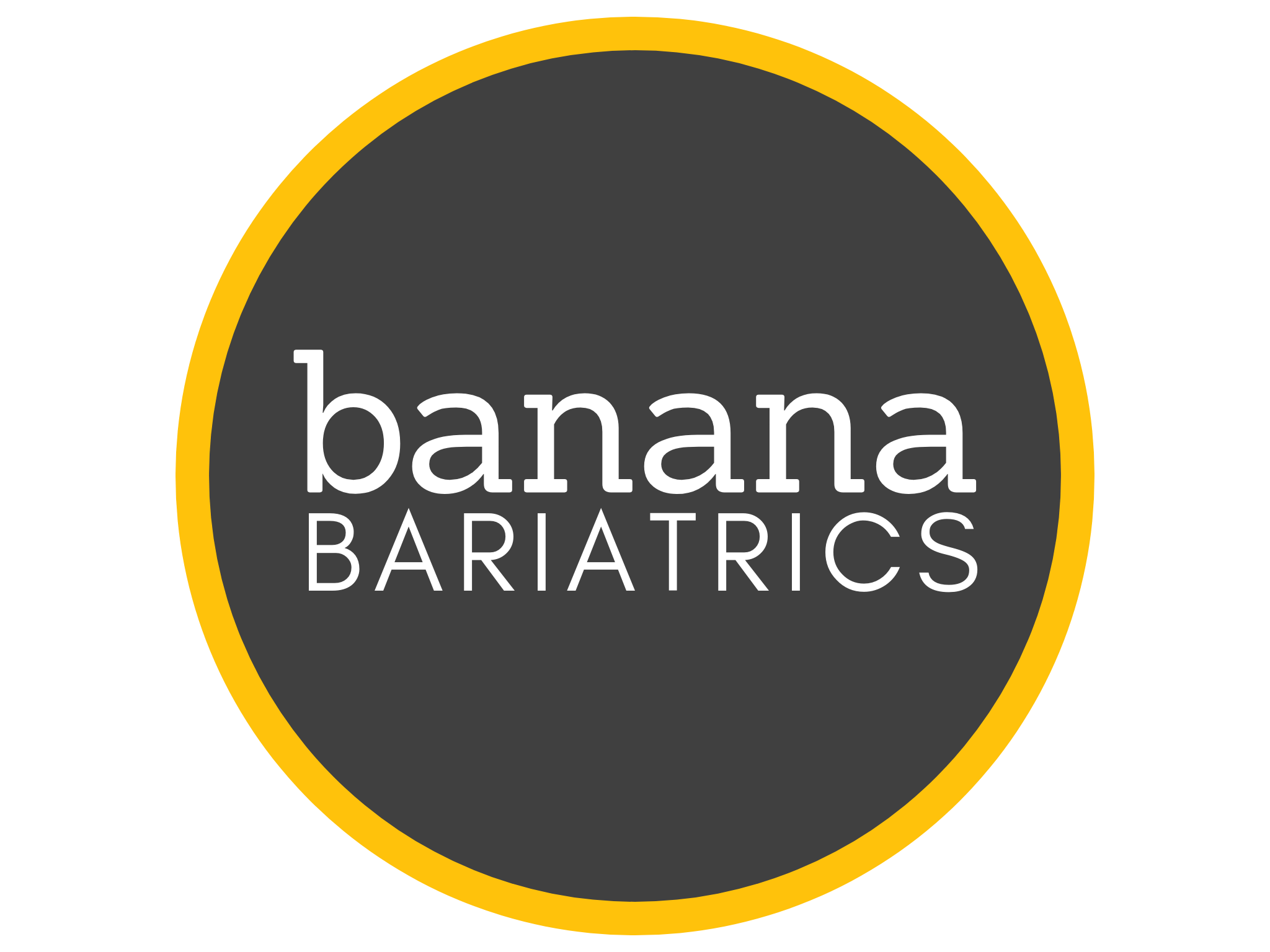

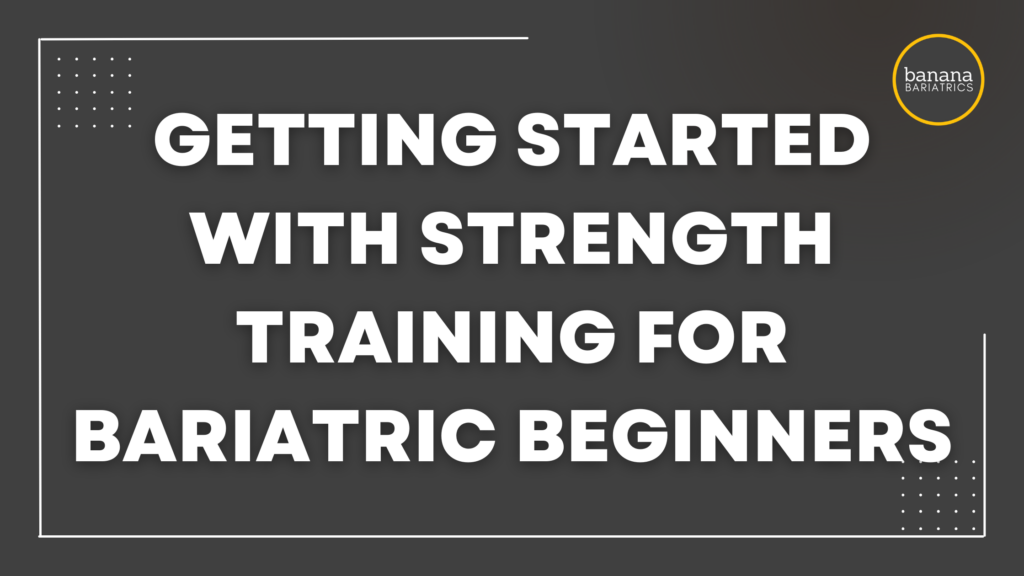
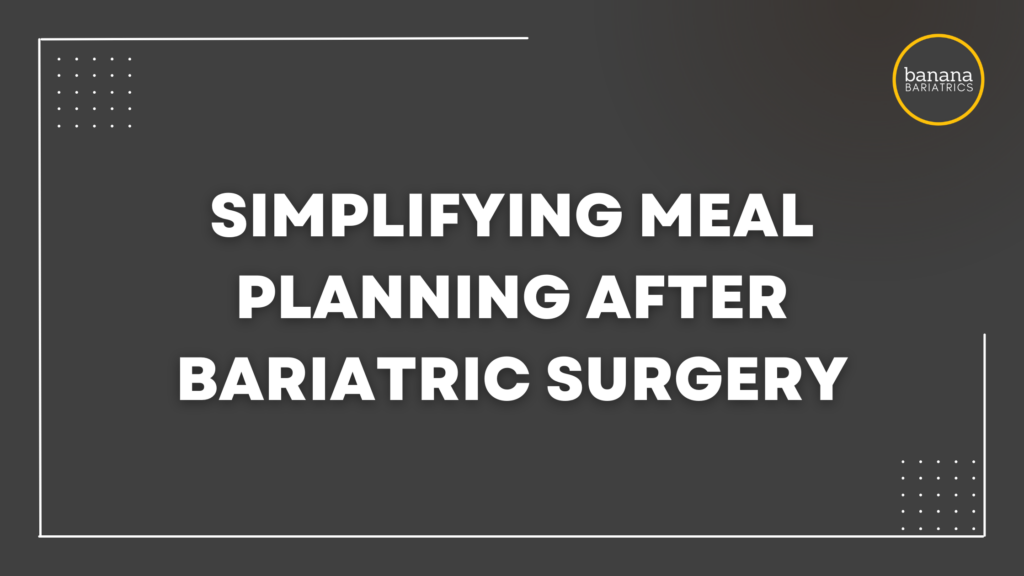
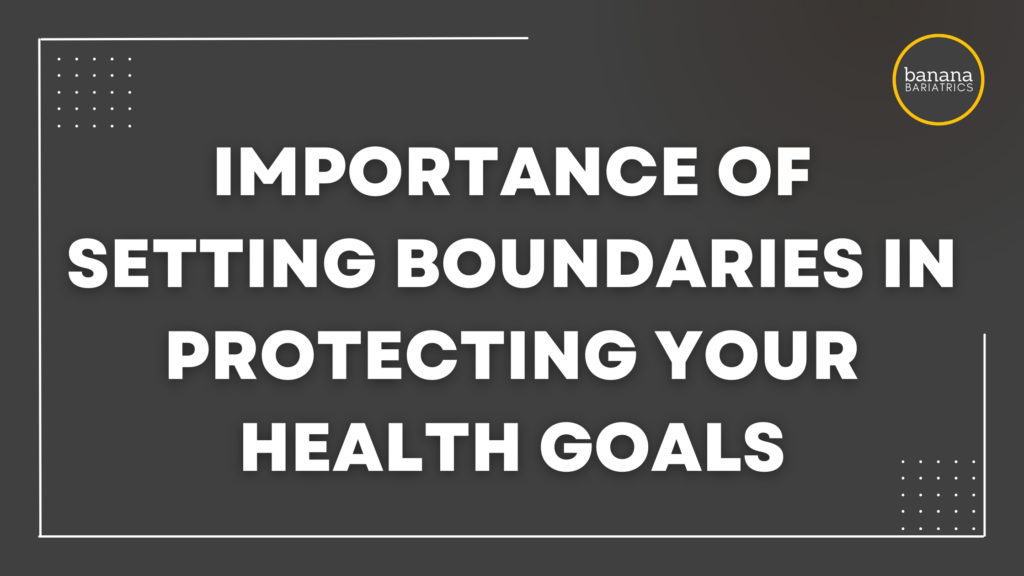

Responses